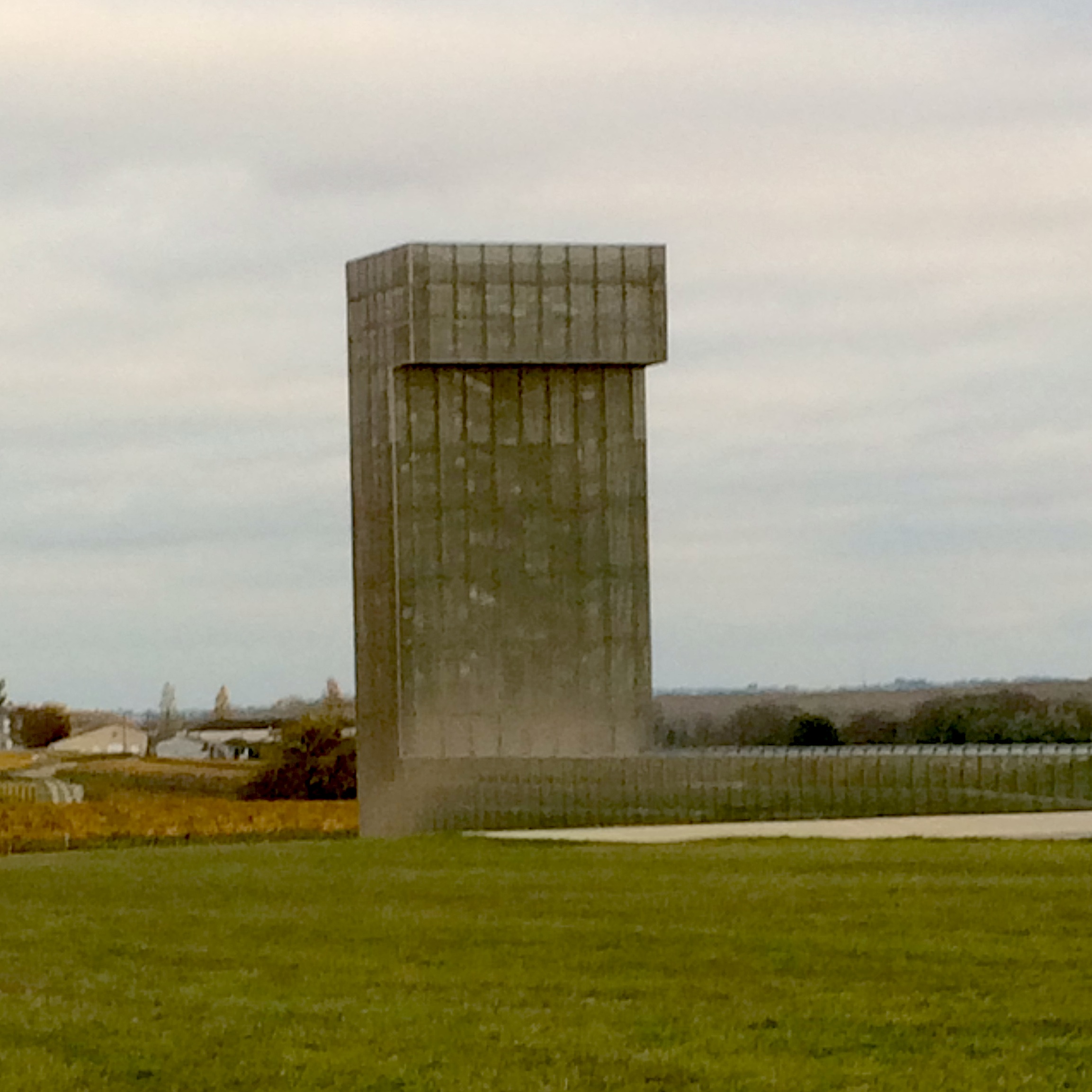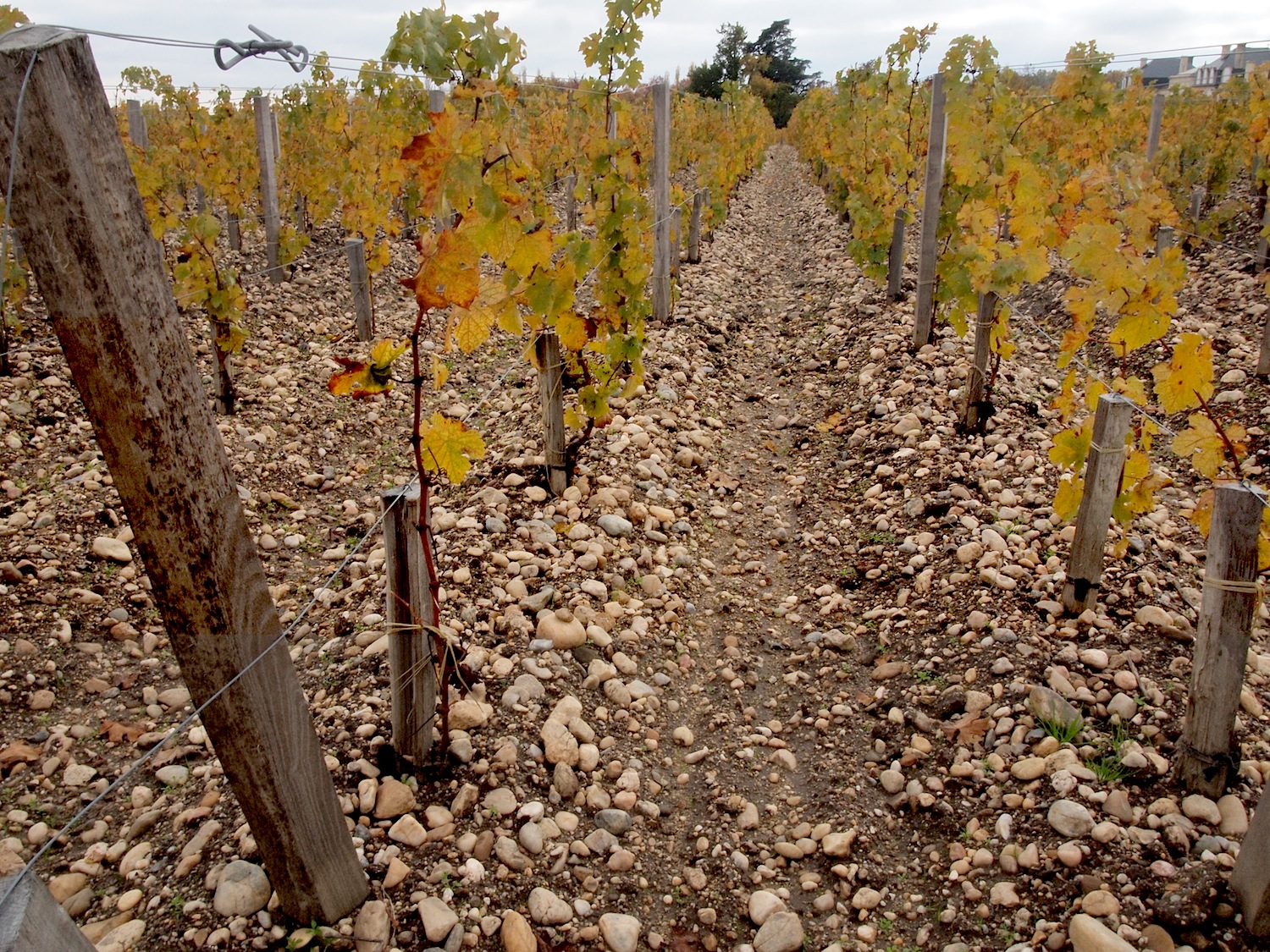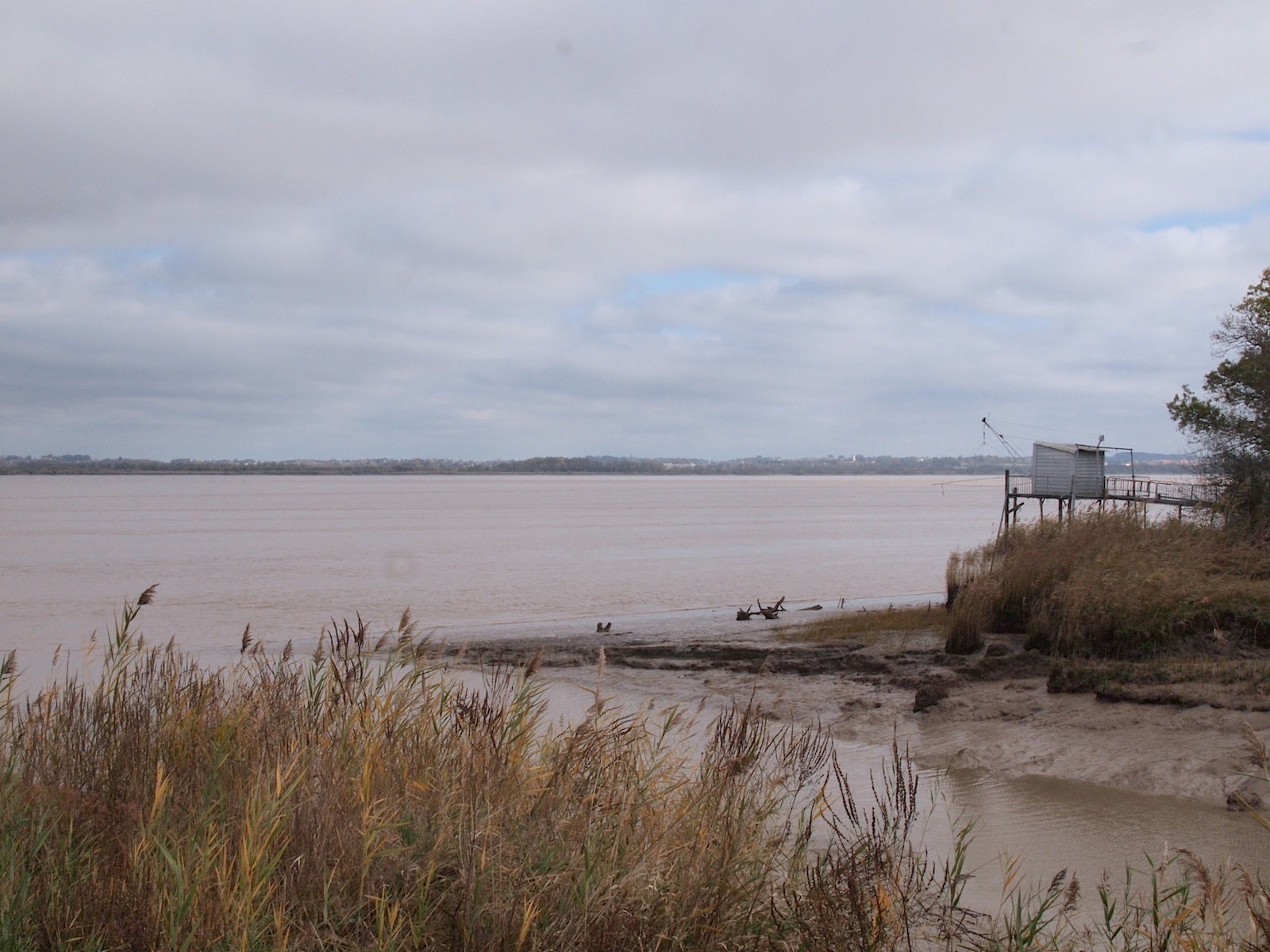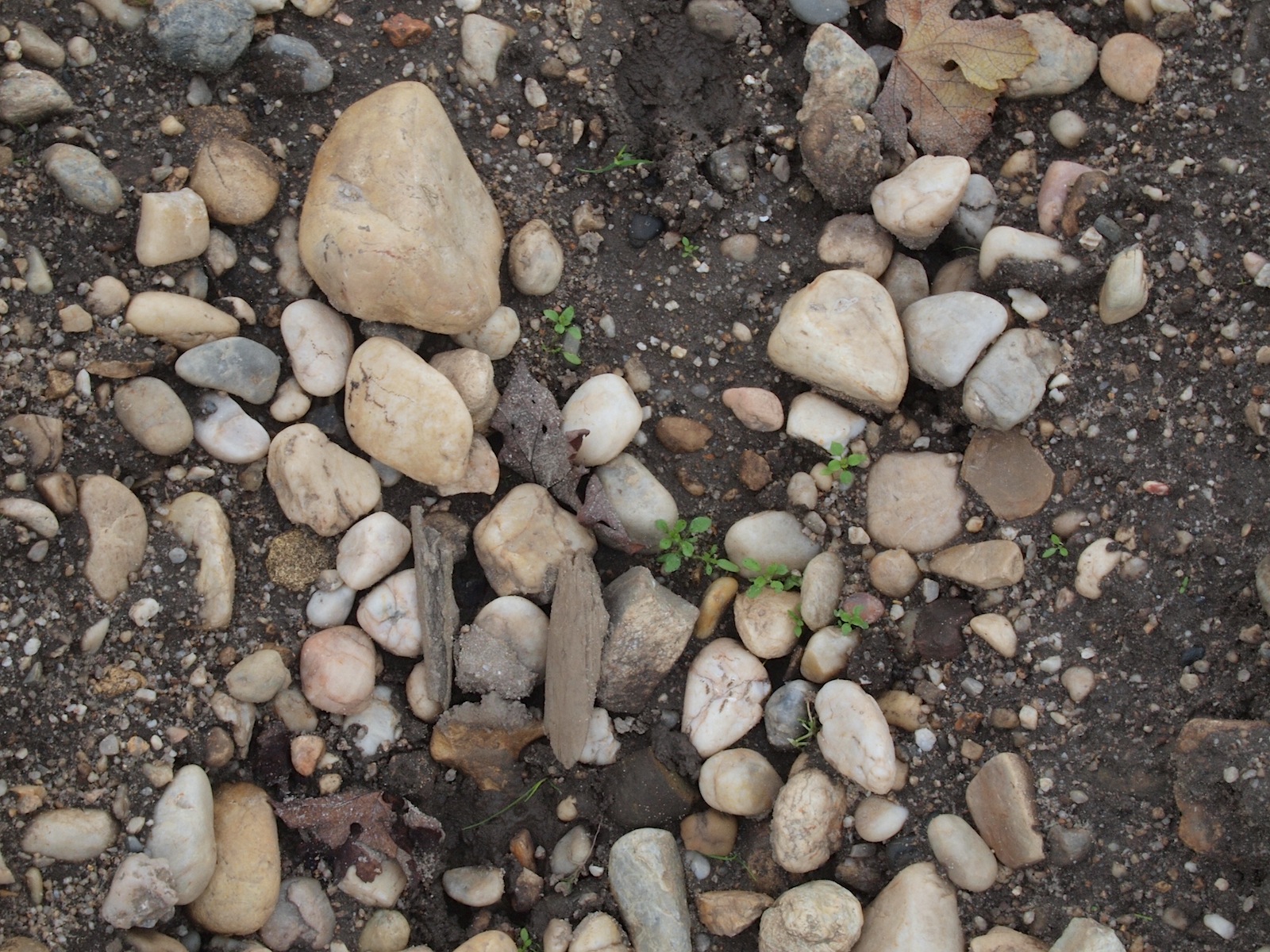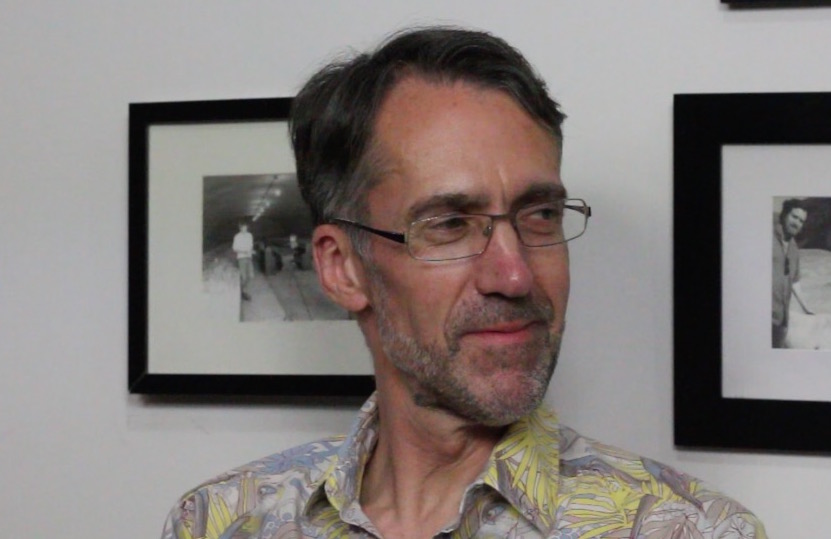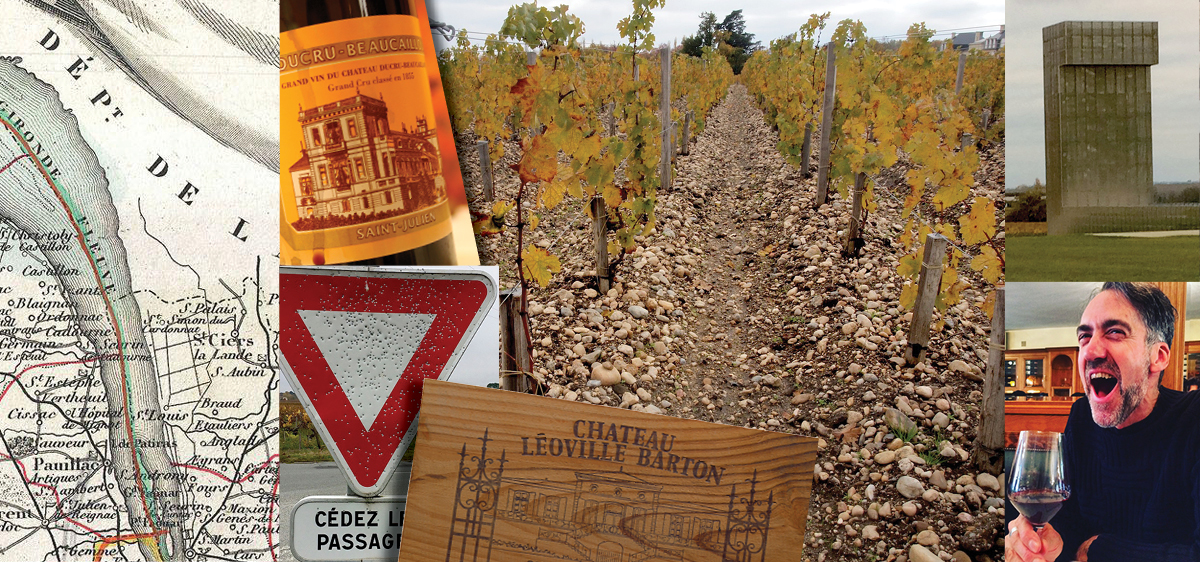
“Now I don’t know where we are!” Damien Sartorius (Photo below right), the 26 year old director of Second Growth Château Léoville-Barton and Third Growth Château Lango-Barton of St. Julien, says to me as the car he’s driving comes to an abrupt halt at a stop sign that’s been repeatedly blasted with shotguns. He’s shocked to have lost his way, because we’re in his homeland, the legendary Médoc sub-region of Bordeaux (BDX). The truth about any place is clearly way more dazing and confusing than the image, and I’m here to discover the true story of this place.
The first thing you have to know is that Damien and I are now lost amongst the vines in a major combat zone of the World Wine War. I’m talking about the conflict in global markets between red BDX and all the other wines made from the same grape varieties – Cabernet Sauvignon and Merlot are now the two most widely planted wine grapes in the world! – and the wider war between high-end red BDX and all the other Liquid Luxury Goods produced around Planet Wine.
Then you need to realize that although the classified châteaux of the Médoc are selling better than at almost any time in their history they’re paradoxically in the defensive after being deserted by many traditional consumers in the West since the last turn of the century. The fact many hipster somms in the Western World now have zero interest in red BDX is another body blow to the region. For these wannabe opinion leaders this is the wrong side of the wine tracks, because red BDX is way too established, old-fashioned and industrial ever to be cool.
The latter problems roots in the fact that no other category of wine is defined as much by the numbers as these. The Red BDX Numbers begin with each producer’s position in the classification of 1855, and since Robert Parker’s ratings for the 1982 vintage red BDXs started the global addiction to numerical scores, critics ratings have became even more decisive for the commercial success of these wines. Disputes about which of those numbers correctly reflect the quality of individual wines are endless among wine geeks and professionals alike, but instantly induce terminal boredom in normal wine drinkers.
The next numbers are those that turned the hipster somms off red BDX big time. In Part 1 I reported how I discovered that the production 2005 Château Haut-Brion in Pessac-Leognan/Graves was 108,000 bottles of First Growth wine and already in March 2007 the retail price was well over Euro 600 per bottle. You can roughly double that production figure for the four First Growths of the Médoc and their prices often go even higher. It’s those six-figure productions that make the most famous wines of the Médoc look industrial to the hipster somms. Of course, you can see this the other way around, as Damien put it to me the last time I saw him in NYC, “the strength of BDX is to produce large quantities of very good wine.” That also makes global distribution possible.
From the perspective of the hipster somms from the last turn of the century red BDX was plastered with gaudy make up and dusted with tacky glitter when a large proportion of the high-end reds began selling to nouveau riche in China, Russia and the countries of the ex-Soviet Union. The “wrongness” of those consumers rubbed off on the wines big time, and the substantial price inflation their conspicuous consumption led to was deemed equally “wrong”.
For high-end French reds they switched to Burgundy because of the much smaller production figures for the top wines, and because of the image of authenticity and hand-crafting that Burgundian winemakers cleverly cultivated. Since my career in wine began 30 years ago in London BDX has been toppled from its once preeminent position and Burgundy went from being dismissed as the “Other Place” to being idealized as the Holy Wine Place. Massive price increases for those wines were swallowed without accusations of opportunism being leveled within a decade of high-end red BDX being damned by the same people for exactly the same thing!
“OK…now I see where we are,” Damien says and we’re off again. “Bordeaux is about the brand,“ he says thoughtfully as we turn onto the D2 north-south route, “if someone has a great soil and makes a great wine from the vineyards planted on it, but they don’t have a brand, then nobody will write about it! For example, there’s Château Belle-Vue,” he says pointing out of the window, “they’re only a Cru Bourgeois, but it’s a really good Haut Médoc. Only one drainage ditch separates it from the Margaux appellation!”
It’s the first time I heard that name, but there are 278 Cru Bourgeois in the Médoc. The painful truth is that considering they are half of all the producers and account for a third of the volume of this appellation’s production I’ve given them way too little attention in recent years. More fundamentally, this is the first time I ever heard an equation that explained Médoc wine quality without any reference to those Red BDX Numbers: great soil + hard work = great wine!
When I set up this trip I planned to spend a whole day tasting little-known Médoc wines to find out if any great wines are being made by producers outside the exalted realm of the classified châteaux, but that turned out to be more difficult than I’d expected. Compagnie Médocaine, a BDX negociant with a specialization in this field were very friendly, but for some reason they didn’t want to put a row of interesting modestly-priced Médoc reds on the table for me to taste. Instead, they pushed me to visit a couple of château. Finally, I decided I’d have to do this thing some other way, but how?
Then Damien’s young friend Emilien Delalande who works as a consulting oenologist at Oenoconseil in Pauillac offered to be my enabler. I met him in NYC at the beginning of the year and was impressed by how he was completely lacking in chauvinism or dogmatism: the New Wine France in person! I’m hoping that before I leave he’ll be able to pull together a tasting of “great wines” from non-classified châteaux. I will also spend a day prospecting in Moulis, the smallest appellation in the Médoc, where there are zero classified châteaux.
If I’m disappointed and great wines from little-known producers don’t exist in significant numbers, then one reason for that will be how during recent years classified châteaux have swallowed up many of the vineyards of their unclassified neighbors. This is possible, because the Médoc classification is of properties, not vineyards as in Burgundy. This means that classified Château Très Cher can purchase the vineyards of Cru Bourgeois Château Ne Pas Cher next door and (as long as the latter’s vineyards are within the same appellation) from the next harvest can sell their production as classified château wine, that is as Liquid Luxury Goods costing many times the previous bottle price!
Château Boston was a Cru Bourgeois produced widely admired bio-dynamic wines that wine-searcher.com says sold for an average of Euro 26. Like Belle-Vue it was within the Haut-Médoc appellation until the authorities moved the border to include it in Margaux. Then the owners sold out to Third Growth Château Palmer – a Margaux legend that’s also biodynamic – for which wine-searcher.com gives an average bottle price of Euro 260: tenfold! In Pauillac more often it was individual vineyard plots that changed hands, but that also whittled down the number of unclassified producers to just four. Maybe this was good for wine quality – good vineyards landed in the hands of good vignerons and winemakers – but it certainly led to a narrowing of stylistic diversity.
The subject of our tour today is the first half of Damien’s equation, the “great soil”, i.e. the terroir or genius loci of the Médoc. We started during our run this morning at Château Mauvesin Barton where clay dominates the soils.
“What is terroir? Soil, topography, climate and the human influence. That’s the factor people often forget to mention,” Damien threw out. “Here we have just one hill with gravel and that’s where the Cabernet Sauvignon is planted. You need gravel to ripen Cabernet,” he explained as he flew through the flat vineyards and I pushed myself to keep up with him.
“Cabernet Sauvignon is the decisive element in the blend here in the Médoc?” I queried, although I was pretty sure what the answer would be.
“Oh yes!” shot back. For him gravel and Cabernet are the crucial combination. He’s cosmopolitan, but also a man of the soil and the grape, and he runs fast.
Although the late-ripening Cabernet Sauvignon grape with its body-builder tannins is widely regarded by the red BDX grape, today Merlot is the most widely planted grape in BDX as a whole due to its earlier ripening and more curvaceous tannins. Lots of Merlot picked late for maximum ripeness/over-ripeness and low acidity is a good base for full-bodied, soft wines with “gobs of fruit” that Parker and many other major critics love. This drove the BDX and global Merlot booms.
“People say that Margaux is more feminine than St- Julien. It’s certainly a fleshier wine because there’s more Merlot in it!” Damien observes as we pass Châteaux d’Issan and Prieure-Lichine in Margaux. The most fundamental aspect of the human influence is the decision which grape variety to plant where. For good or for ill it will influence the taste of the wine as much as anything that happens in the cellar. It suddenly strikes me that before to day I was never given a vineyard tour by a Médoc château, but there was always a cellar tour. We journalists and somms tended to unthinkingly follow that lead and regard red BDX as a made wines. Soil, who cares about soil? Extraction! New oak! Strict barrel selection!
(Photo: the sci-fi tower at Gruaud-Larose)
As we climb the slope into St. Julien from the marshes and meadows below it, relics of the Médoc prior to the first BDX wine boom in the 18th century, Château Beychevelle – the architectural jewel of that boom! – swings into view. Then I see that right next to it a rusty mother ship has landed. OMG, that’s the new cellars! But, there are several examples of science fiction winery architecture in St. Julien and they surely influence sensitive visiting aliens like me. ET phone home!
”On the left is probably the most expensive football field and tennis court in all of France!” concludes Damien’s brief introduction to his hometown. We’re now surrounded by Luxury Liquid Goods real estate: location, location, location! The American Association of Wine Economists (AAWE) recently gave the average price of vineyards in St. Julien as 1.2 million Euros per hectare, but Pauillac immediately to the north is yet more expensive at 2 million Euros per hectare. However, in Burgundy the average price for Grand Cru vineyards Burgundy is a staggering 4.785 million Euros per hectare!
This throws up the rarely posed question whether big bucks are compatible with terroir wines. Of course, it isn’t specific to BDX, rather it also applies to Burgundy, Tuscany, Napa Valley, etc. However, poverty is no guarantee of wine authenticity either.
“This is the southern of the two plateaus that make up the St. Julien,” my host continues as we pass the imposing Château Ducru-Beaucaillou from the second great BDX wine boom in the 19th century, then we pull over to look at the vineyards to the right of the road. Below the gentle vine-clothed slope is a strip of meadows called the Pallas, then the two kilometer wide expanse of the Gironde, so we’re almost literally on the Left Bank.
“These are the Cabernet vines of Château Langoa Barton.” As I follow Damien the predominance of gravel in the soil is obvious. “Langoa has the flesh that Léoville lacks, but that’s because there’s more Merlot in Langoa.” There’s the human factor and no fear of Merlot either. We head back to the car and are off again.
“This is Château Langoa Barton itself where you’ll taste tomorrow,” my host says as we pass a complex of pale stone buildings on both sides of the D2 in a hollow, “the château on the label of Léoville Barton is actually Langoa Barton where both wines are made. The law says that if you put a picture of a château on the label it has to be the place the wine is made.” If the owners of classified Château Très Cher ripped down their 18th century château and replaced it with the Death Star, then they’d have to switch to a picture of that or drop the current label known to millions. No wonder nobody here took science fiction architecture that far!
With its view through the opening wrought-iron gates to the modestly sized, elegant château and its beautiful gardens Léoville Barton is one of the few labels of a classed growth Médoc wine devoid of historical self-importance. In St. Émilion and Pomerol on the Right Bank of the Gironde many famous châteaux including Pétrus are no more than farmhouses, and therefore often not pictured on the label, because long-term it might undermine their high prices.
“Next stop is the most important vineyards of Léoville (photo left),” Damien explains as the car takes a gentle rise, we’re back amongst the vines and pull over to the side of the road almost immediately next to a Château l’eau, an ugly concrete water tower. As we step out of the car and into the vineyard immediately to the east of the D2 I note the youth of the vines rooting in the gravel at our feet.
“Merlot used to be planted on this hilltop, because there is less frost here and Merlot is frost-sensitive, but this is an ideal location for Cabernet Sauvignon, so we replanted with a year ago.” The human influence that is Damien Sartorius in action!
“There’s an old saying that the vineyards that can see the river are the best.” That rings a bell in my head, because it was one of the first things I learned about the Médoc 30 years ago in London. I assumed it’s because there’s more abundant light there.
“You can feel the breeze. There’s more air movement here due to the proximity to the Gironde (photo right),” he said unwittingly bursting my bubble of supposed wisdom, “that’s why we were able to produce wine in 1991.” He’s referring to the spring frost that year which killed all the young shoots of the vines up on the plateau, but not on this slope. In this sense wine is often a matter of life and death.
“The summer of 2003 wasn’t just dry, it was hot too, and at the end of it the vines here were also in better shape than those on the plateau.” Here the terroir factor is topography, but I sense that Damien hasn’t finished with the soil yet.
“I’m often amazed how little is talked about the soil here in the Médoc. The gravel was deposited in layers and right here the gravel on the surface is type IV, the last generation of gravel to be deposited. It runs from Château Montrose in St. Estèphe to the north, most of St. Julien and around Château Margaux is the southern tip of the layer. Most of Pauillac is type III gravel.” That almost exactly delineates the areas of the Médoc where Cabernet Sauvignon dominates. However, the terroir factor soil doesn’t give the winemaker an advantage until he understands it, so the crucial combination for the production of great red Médoc is actually: gravel + Cabernet + winemaker.
The final stretch of our tour is the drive north through Pauillac where Damien went to high school and on to St. Estèphe. I’m beginning to grasp the terroir, or the Real Medoc. It’s a concrete place with clearly discernable characteristics, unlike the unfathomable mysteries and metaphysical obfuscation of the version of Burgundy that’s the Holy Place of Wine. Could I fall in love with red BDX again? Maybe, if the current wines are good enough and the prices not too crazy.
“Pauillac is the man and St. Estèphe is the macho man, but now people don’t want big tannic wines, so they are making more elegant wines,” my host says as we pass Château Montrose. Then there’s the Crazy Médoc where all those numbers simplify the complexity of the appellation’s wine production and obscure the terroir realities. This optically unspectacular landscape is a kind of green factory decorated with futuristic structures and the renovated architecture heritage of the previous BDX wine booms. It is also a winemakers’ club many of whose members are fighting hard to remain the premier suppliers of Liquid Luxury Goods for the conspicuous consumption of the 21st century.
Unlike most of their neighbors, Léoville-Barton and Langoa-Barton steadfastly ignored the modern fashion for elegant wines, remaining true to a forthrightly tannic, but sleek style of red BDX. In spite of his youth I know that Damien Sartorius is firmly committed to that tradition. The next question for me is whether his is a backward looking venture doomed to failure by consumers unwilling and unable to grasp it, or the daring resurrection of a great tradition.
Read BDX Pt. 1
Stuart Pigott is a British wine journalist living in Berlin. He has published a number of other wine books, including Touring in Wine Country, the Wine Atlas of Germany, Planet Wine, and Life Beyond Liebfraumilch.
Buy Stuart Pigott's The Best White Wine on Earth: The Riesling Story on Amazon for $17.30.
Buy Stuart Pigott's Kindle book ROCK STARS OF WINE AMERICA #3: FLXtra with KJR - This is a Love Story on Amazon for $4.99.
More from Stuart Pigott on Grape Collective:
Read Part I of the series: The Rise of The Hipster Sommelier
Read Part II: The Rise of the Hipster Sommelier Part II
Read Part III: Rise of the Hipster Sommerlier Part III



